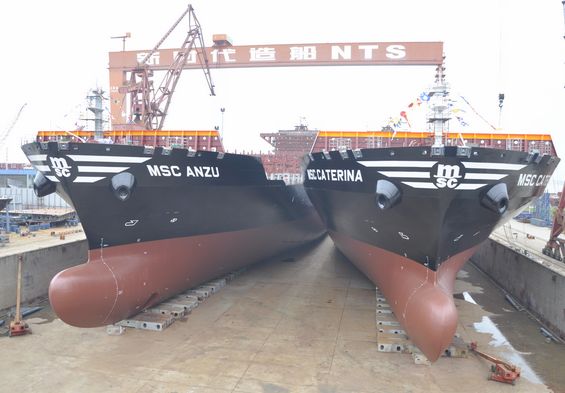Shipyard output hits seven-year high

After a decade of declining output, shipyard production has begun to edge up in recent years with deliveries in Q1 reaching a seven-year quarterly high of 10.1m cgt, according to new data from Clarksons Research. Clarksons is projecting a 15% increase in shipyard output for full year 2024 to 40.6m cgt.
“With increased pricing (up ~40% since 2020, albeit with significantly increased costs for yards), a strong forward orderbook (3.5 years versus 2.5 years) and good, cross-sector, order demand, shipyard capacity has been a limiting factor in output,” Clarksons noted in its most recent weekly report.
The total number of active yards has dropped by two-thirds since 2010, according to the British broker.
Analysts at Danish Ship Finance are bullish on the outlook for the shipbuilding industry, but only in the short term, with global utilisation rates forecast to peak in 2024 before potentially softening in the following two years.
“Continuously firm contracting activity and limited yard availability are pushing newbuilding prices ever closer to an all-time high,” Danish Ship Finance noted in a report issued last week.
Since the start of 2023, annual global yard capacity has increased by 6m cgt to 59m cgt, according to Danish Ship Finance.
“Additional active second-tier yards in China have been the main contributor to this growth,” the report noted.
Splash has been reporting a great deal about new shipyard capacity hitting the market.
For instance, Jiangsu-based New Times Shipbuilding, one of China’s largest privately owned shipyards, is awaiting government approval for a new drydock with broker Gibson reporting Q1 2027 deliveries will open up once the yard gets the green light.
After several years of capacity reduction, last year saw several attempts to reopen some Chinese facilities.
Hengli Heavy Industries Group, a subsidiary of the Hengli Group, is running the assets of STX Dalian. The yard restarted in January 2023.
In August 2023, Wuhu Shipyard took over the land and facilities of the former Samjin Shipbuilding Industry part of the automobile group Chery.
Kouan Shipyard has been going through a reorganisation process since 2019 and is currently building blocks and ships for the account of third-party shipbuilders including Dajin, Taizhou Changqin and Taizhou Changyue.
Jiangxi New Jiangzhou Shipbuilding lndustry was established on March 31, 2023. The main investors are Qinshi (Xiamen) Trading and Jiangsu Yangchuan Investment Development. Qinshi (Xiamen) is the parent company of a listed company, Bestway Marine & Energy Technology, whereas Jiangsu Yangchuan is a subsidiary of Yangzijiang Shipbuilding Group. The yard has signed contracts for stainless steel tankers with Chinese buyers.
Private company Fujian Guanhai Shipbuilding, which stopped production in 2013 and went bankrupt in 2019, has now been taken over by Fujian’s private steel giant Jinshenglan Group and renamed the Fujian Songmin Group.
Quanzhou Shipyard, which was established in 2004 and entered bankruptcy in 2019, reached an agreement with a local government-owned company to invest and reorganise the yard. In September 2023, a ceremony was held for the resumption of work and production.
The Review of Maritime Transport 2023, published in September by the United Nations Conference on Trade and Development (UNCTAD), urged shipyards to expand quickly to aid with shipping’s green transition.
“Shipyard capacity is currently facing constraints. Tanker and dry bulk owners are anticipating long waiting times and high building prices. Increasing shipbuilding capacity is crucial to ensure that shipping meets global demand and its sustainability goals,” the UNCTAD report stated.
While many other analysts are predicting bottlenecks at shipyards, with shipbuilding executives mulling expansion plans for the first time since the global financial crisis, the Danish Ship Finance report takes a contrarian view, based on how it sees seaborne trade volumes declining in the coming decades. Demand for shipyard capacity may decline by 25% towards 2040, the Danish report predicted.
